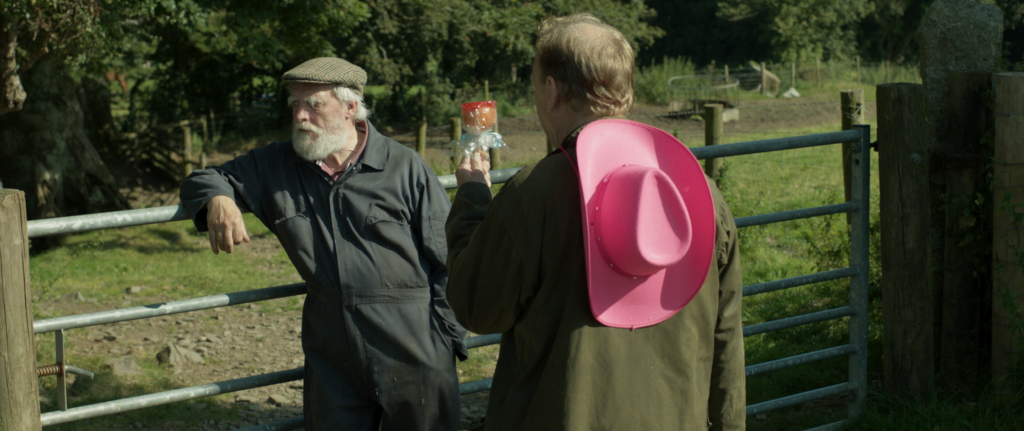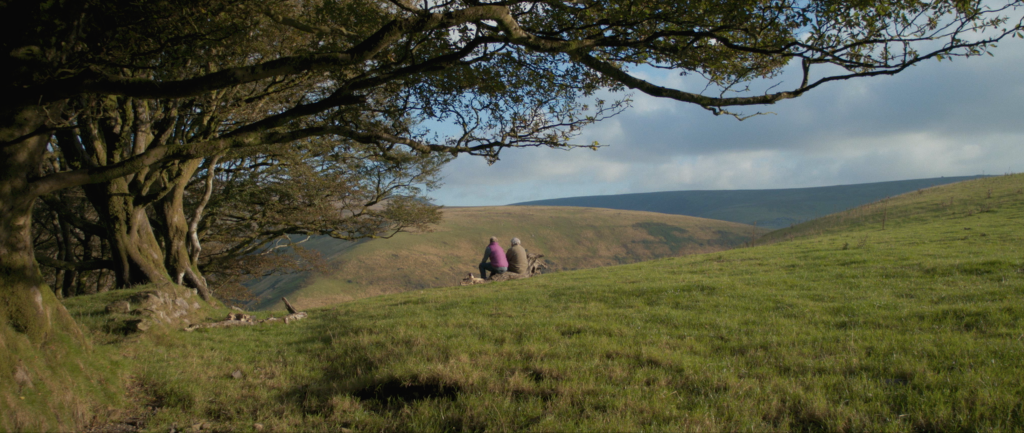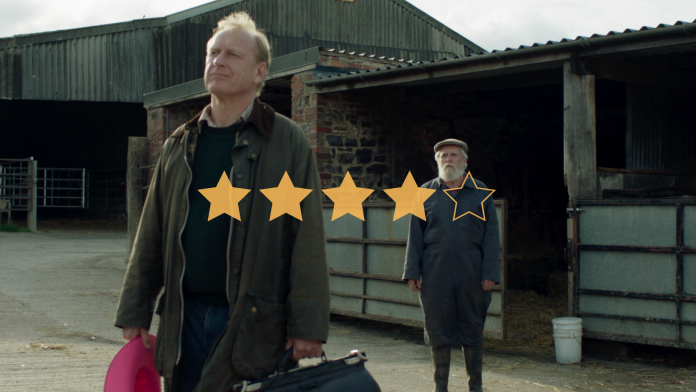Eight years after the play’s release, this rousing story of the challenges faced by farmers during the 2001 Foot and Mouth epidemic has been given new life.
★★★★✰
Based on the award-winning play of the same name by Bea Roberts, And Then Come The Nightjars begins in the March of 2001 with the outbreak of the devastating foot-and-mouth disease (FMD) epidemic, which led to the slaughter of six million livestock and around seven thousand farm workers losing their jobs across the UK. The film, as the closing credits announce, is dedicated to these workers—a sentiment that feels genuine, thanks to its people-centric approach. Weaving in themes of love, loss, friendship and grief, the film focuses on surly Dartmoor-born farmer Michael and bouncy veterinarian Jeffrey, both portrayed by the same actors who starred in the original play.
The great conflict that the film establishes quite early on stems from Michael and Jeffrey’s jobs, which, while also the source of their friendship, threaten to tear them apart. Jeffrey’s veterinarian position means that when the dreaded disease makes its way into Dartmoor cattle, he’s given the terrible task of euthanising Michael’s herd. Nigel Hastings portrays Jeffrey perfectly here—initially bouncy, visiting Michael while wearing a shocking pink cowboy hat and affably allowing the nickname ‘Herriot’, a tired air to him grows throughout proceedings. He’s a man who knows he’s in a war with no winners.
From the moment the film starts the cinematography stands out, mostly because it’s so simple and clean. Colours aren’t overly edited or saturated, and perhaps best of all you can actually see everything. In a world of films where any scene with a darker colour palette is impossible to make out, it’s refreshing for green to be green and grey to be grey. Even during scenes with strong visual contrasts, such as one with a fire burning in the dead of night, everything is visible without the striking effect of the flames being lost. In addition, the film does not rely on mountains of gore or dead animals to convey the impact of the epidemic—Michael’s reactions are the focus, and they are enough.
Another strength is the pacing. The film has a surprisingly short runtime, at a little over an hour—much like the play. Far from making the story feel condensed or rushed, this is the perfect amount of time for it to stretch its wings comfortably. Roberts takes the audience through conflict, resolution and everything in-between without adding in unnecessary characters and side-plots. Characters other than the two leads barely get speaking roles; the story is so laser-focused on their friendship that there’s no room for anyone else.

The characters feel real, with a genuine emotional core. Michael is a widower, mourning his wife Sheila. The herd of cows he’s trying to protect is the last group that were alive when she was, compounding his grief at the prospect of losing them. We get to know each cow by name, see their sheds, feel their steamy breath. By building the audience’s relationship with the animals, the thought of the herd being culled is heart wrenching for the viewer as well as the farmer. The same level of emotional intensity is seen in Jeffrey’s character—Hastings perfectly portrays the moral agony he’s enduring, the knowledge that he must betray his friend as kindly as possible. With so much attention to detail in the construction of their friendship—the way they quiz one another, the nicknames, their habit of birdwatching when the farm’s nightjars come out at dusk—we mourn its loss just as much as that of the herd.

The film isn’t about the FMD epidemic—not truly. It expands to encompass all of the ways in which the farming way of life is a struggle: falling sales prices for milk, the push to sell land to developers, the romanticisation of a difficult way of life—all of these only accentuate the catastrophic consequences of the disease. The cinematography showcases this struggle, contrasting a pyre or a dead calf with the idealised landscape that holidaymakers see, staying in cottages with twinkly names and ignorant of the fact that, just across the fields, a livelihood is at stake. The film is the story of a struggle that the filmmakers have not glossed over or sugar-coated, but instead chosen to showcase.
The Verdict
And Then Come The Nightjars might start with an event from 2001, but its underlying messages are current and poignant. The nightjars are harbingers of all that comes without a warning. Early on, the optimistic Jeffrey says “as long as we all just stick to the rules it’ll be fine.” This is about how we get through devastation, and what we tell ourselves in order to do so.
Words by Casey Langton
Support The Indiependent
We’re trying to raise £200 a month to help cover our operational costs. This includes our ‘Writer of the Month’ awards, where we recognise the amazing work produced by our contributor team. If you’ve enjoyed reading our site, we’d really appreciate it if you could donate to The Indiependent. Whether you can give £1 or £10, you’d be making a huge difference to our small team.
